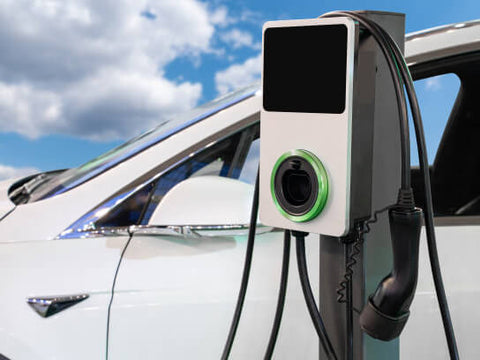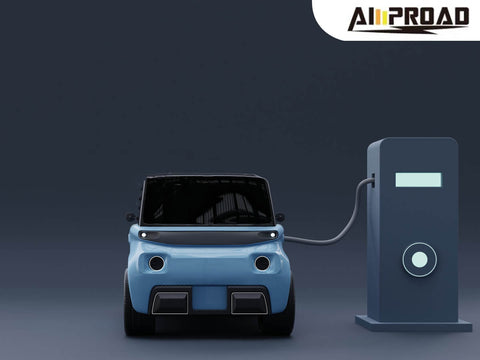
With the growing popularity of electric vehicles (EVs), the need for convenient charging solutions has become paramount. Home EV chargers play a crucial role in meeting this demand, offering EV owners a convenient and reliable way to recharge their vehicles overnight or whenever needed. However, amidst the convenience they provide, it's essential to acknowledge and understand the potential risks associated with home EV chargers.
In this article, we delve into the various risks that EV owners may encounter when using home charging stations. From electrical safety concerns to cybersecurity vulnerabilities, physical security risks, and environmental hazards, we aim to shed light on the potential challenges and dangers that come with installing and using home EV chargers. By exploring these risks, we hope to empower EV owners with the knowledge and awareness needed to ensure safe and secure charging experiences at home.
I. Electrical Safety Risks
When it comes to home EV chargers, ensuring electrical safety is paramount. These chargers are essentially electrical devices that draw power from your home's electrical system to charge your electric vehicle. As such, it's crucial to consider various electrical safety factors when installing and using them.
Home EV chargers typically come in two types: Level 1 and Level 2 chargers. Level 1 chargers utilize a standard 120-volt household outlet and provide a slower charging rate, while Level 2 charger requires a 240-volt outlet and offer faster charging speeds. Regardless of the type, both Level 1 and Level 2 chargers must be installed correctly and safely to minimize the risk of electrical hazards.
Potential Risks of Electrical Fires or Shocks Due to Improper Installation or Faulty Equipment
Improper installation or faulty equipment can pose significant risks of electrical fires or shocks when using home EV chargers. Common installation mistakes include inadequate wiring, improper grounding, and overloading circuits, which can lead to overheating, short circuits, or electrical fires. Similarly, using damaged or defective charging equipment can increase the likelihood of electrical faults and pose safety hazards to both users and property.
To mitigate these risks, it's essential to enlist the services of qualified electricians or certified installers for the installation of home EV chargers. These professionals have the expertise to ensure that the installation meets all safety standards and regulations, reducing the likelihood of electrical accidents or incidents.
Importance of Adhering to Safety Guidelines and Regulations for Home EV Charger Installation
Adhering to safety guidelines and regulations for home EV charger installation is paramount to safeguarding against electrical hazards. Regulatory bodies and standards organizations, such as the National Electrical Code (NEC) and the Society of Automotive Engineers (SAE), have established safety standards and guidelines for the installation and operation of EV charging equipment.
Following these guidelines helps ensure that home EV charger is installed safely and operate reliably. This includes proper installation techniques, adherence to electrical code requirements, and compliance with manufacturer specifications. Additionally, regular inspection and maintenance of charging equipment are essential to identify and address any potential safety issues proactively.
As per the analysis, electrical safety is a critical consideration when it comes to home EV chargers. By understanding the potential risks associated with improper installation or faulty equipment and adhering to safety guidelines and regulations, EV owners can minimize the risk of electrical hazards and ensure safe and reliable charging experiences at home.
II. Cybersecurity Risks
The Integration of Smart Features in Home EV Chargers
With the advancement of technology, many home EV chargers now come equipped with smart features that allow users to monitor and control charging remotely via smartphone apps or Wi-Fi connectivity. These smart chargers offer convenience and flexibility, allowing users to schedule charging sessions, track energy consumption, and receive notifications about charging status. However, the integration of smart features also introduces cybersecurity risks that must be addressed to safeguard against potential threats.
Risks of Cybersecurity Breaches, Including Unauthorized Access or Hacking of Charging Systems
One of the primary cybersecurity risks associated with smart home EV chargers is the potential for unauthorized access or hacking of charging systems. Hackers may exploit vulnerabilities in the charger's software or network connection to gain access to the charging system, allowing them to manipulate charging settings, steal user data, or disrupt charging operations. Additionally, compromised chargers could serve as entry points for cyberattacks on other connected devices within the home network, posing further security risks.
Importance of Implementing Robust Cybersecurity Measures to Protect Home EV Chargers and User Data
To mitigate the risks of cybersecurity breaches, it is essential to implement robust cybersecurity measures to protect home EV chargers and user data. This includes adopting encryption protocols to secure communication between the charger and mobile app, implementing multi-factor authentication for remote access, and regularly updating firmware to patch known vulnerabilities. Furthermore, users should follow best practices for network security, such as using strong passwords and keeping software up to date, to prevent unauthorized access to their home charging systems.
Additionally, manufacturers play a crucial role in ensuring the security of home EV chargers by designing devices with built-in security features, conducting regular security audits, and providing timely software updates to address emerging threats. By prioritizing cybersecurity throughout the design, development, and deployment phases, manufacturers can enhance the resilience of home EV chargers against cyberattacks and protect user privacy and safety.
III. Physical Security Risks
Consideration of Physical Security Vulnerabilities Associated with Home EV Chargers
While home EV chargers offer convenience and accessibility, they also present physical security vulnerabilities that must be addressed. Home EV chargers, particularly Level 2 EV charger, is often installed outdoors or in public spaces, making them susceptible to theft, vandalism, or tampering. Additionally, the presence of charging cables and other accessories may attract unwanted attention from opportunistic thieves or vandals.
Risks of Theft, Vandalism, or Tampering with Charging Equipment
Theft, vandalism, or tampering with charging equipment poses significant risks to home EV chargers and their users. Thieves may target charging cables or other valuable components for resale, while vandals may damage chargers out of malice or mischief. Furthermore, tampering with charging equipment can compromise its functionality and safety, posing risks to both the charger and the connected vehicle.
To mitigate these risks, it's essential to implement strategies for enhancing physical security around home EV chargers. Installing security cameras in the vicinity of charging stations can deter potential thieves and vandals and provide surveillance footage in the event of a security incident. Additionally, securing charging cables with cable locks or lockable cable management systems can prevent unauthorized removal or tampering with charging equipment.
Strategies for Enhancing Physical Security, Such as Installing Security Cameras or Securing Charging Cables
In addition to surveillance cameras and cable locks, there are several other strategies for enhancing physical security around home EV chargers. Installing motion sensor lights or alarm systems can alert homeowners to suspicious activity and deter would-be intruders. Furthermore, positioning chargers in well-lit areas or within the line of sight from nearby windows can increase visibility and discourage unauthorized access.
Homeowners should also consider the location and placement of charging stations to minimize security risks. Choosing secure and discreet locations for charger installation, such as enclosed garages or fenced yards, can reduce the likelihood of theft or vandalism. Additionally, displaying signage indicating the presence of security measures, such as cameras or alarms, can serve as a deterrent to potential perpetrators.
By implementing these physical security measures, homeowners can protect their home EV chargers from theft, vandalism, and tampering, ensuring safe and reliable charging experiences for their electric vehicles.
IV. Environmental Risks
Examination of Environmental Risks Related to Home EV Chargers, Such as Exposure to Extreme Weather Conditions
Home EV chargers, like any outdoor electrical equipment, are subject to environmental risks, including exposure to extreme weather conditions. Harsh weather elements such as rain, snow, hail, and high winds can pose threats to the structural integrity and functionality of charging equipment. Water ingress into electrical components can cause short circuits or corrosion, while temperature extremes can affect battery performance and charging efficiency. Additionally, prolonged exposure to sunlight may degrade materials and accelerate wear and tear on charging cables and connectors.
Risks of Environmental Contamination from Battery Leaks or Hazardous Materials
Another environmental risk associated with home EV chargers is the potential for environmental contamination from battery leaks or hazardous materials. While modern EV batteries are designed to be leak-proof and contain hazardous materials safely, accidents or malfunctions can occur, leading to the release of toxic chemicals or electrolytes. In the event of a battery leak or spill, these substances can contaminate soil, water sources, or nearby ecosystems, posing environmental risks and health hazards to humans and wildlife.
Importance of Proper Maintenance and Environmental Stewardship in Mitigating These Risks
In addition to routine maintenance, proper storage and care of charging equipment like the AMPROAD portable Level 2 EV charger are essential to mitigate environmental risks. When not in use, storing the charger indoors or in a weatherproof enclosure can protect it from exposure to extreme weather conditions, prolonging its lifespan and ensuring optimal performance. Furthermore, for EV owners who frequently travel or rely on portable charging solutions, the versatility of the AMPROAD charger allows for convenient charging both at home and on the go, reducing reliance on public charging infrastructure and minimizing environmental impact. By incorporating environmentally conscious practices into charger maintenance and usage, EV owners can minimize the environmental footprint of their charging activities and contribute to sustainable EV adoption.
Safeguarding Home EV Charging: Mitigating Risks and Promoting Safety
Home EV chargers pose various risks, including electrical safety hazards due to improper installation or faulty equipment, cybersecurity vulnerabilities from smart features, physical security risks like theft or vandalism, and environmental risks such as exposure to extreme weather conditions or battery leaks.
To address these risks, it's crucial for EV owners to be aware of potential hazards and take proactive measures to mitigate them. This includes ensuring proper installation and maintenance of charging equipment, implementing robust cybersecurity measures to protect against unauthorized access, enhancing physical security around chargers, and practicing environmental stewardship to minimize environmental impact.
Homeowners, EV charger manufacturers, and policymakers all have a role to play in prioritizing safety and security in home charging infrastructure. Homeowners should prioritize safety when installing and using EV chargers, following manufacturer guidelines and seeking professional assistance when needed. EV charger manufacturers should design products with built-in safety features and provide clear instructions for installation and operation. Policymakers should establish and enforce regulations to ensure the safety and security of home charging infrastructure, including standards for installation, cybersecurity protocols, and environmental regulations.
By working together to address these risks and prioritize safety and security, we can create a safer and more sustainable environment for EV charging, promoting the widespread adoption of electric vehicles and contributing to a cleaner, greener future.
FAQs / People Also Ask
Q: What are the main risks associated with home electric vehicle (EV) chargers?
A: The main risks include electrical safety hazards due to improper installation or faulty equipment, cybersecurity vulnerabilities from smart features, physical security risks like theft or vandalism, and environmental risks such as exposure to extreme weather conditions or battery leaks.
Q: How can I mitigate the risks associated with home EV chargers?
A: Mitigating risks involves ensuring proper installation and maintenance of charging equipment, implementing robust cybersecurity measures to protect against unauthorized access, enhancing physical security around chargers, and practicing environmental stewardship to minimize environmental impact.
Q: Are there any cybersecurity risks associated with home EV chargers?
A: Yes, home EV chargers with smart features may be vulnerable to cybersecurity breaches, including unauthorized access or hacking of charging systems. It's crucial to implement robust cybersecurity measures such as encryption protocols and regular firmware updates to protect against these risks.
Q: How can I protect my home EV charger from theft or vandalism?
A: Enhancing physical security measures around home EV chargers, such as installing security cameras, using cable locks, and positioning chargers in well-lit areas, can deter theft or vandalism and safeguard charging equipment.





